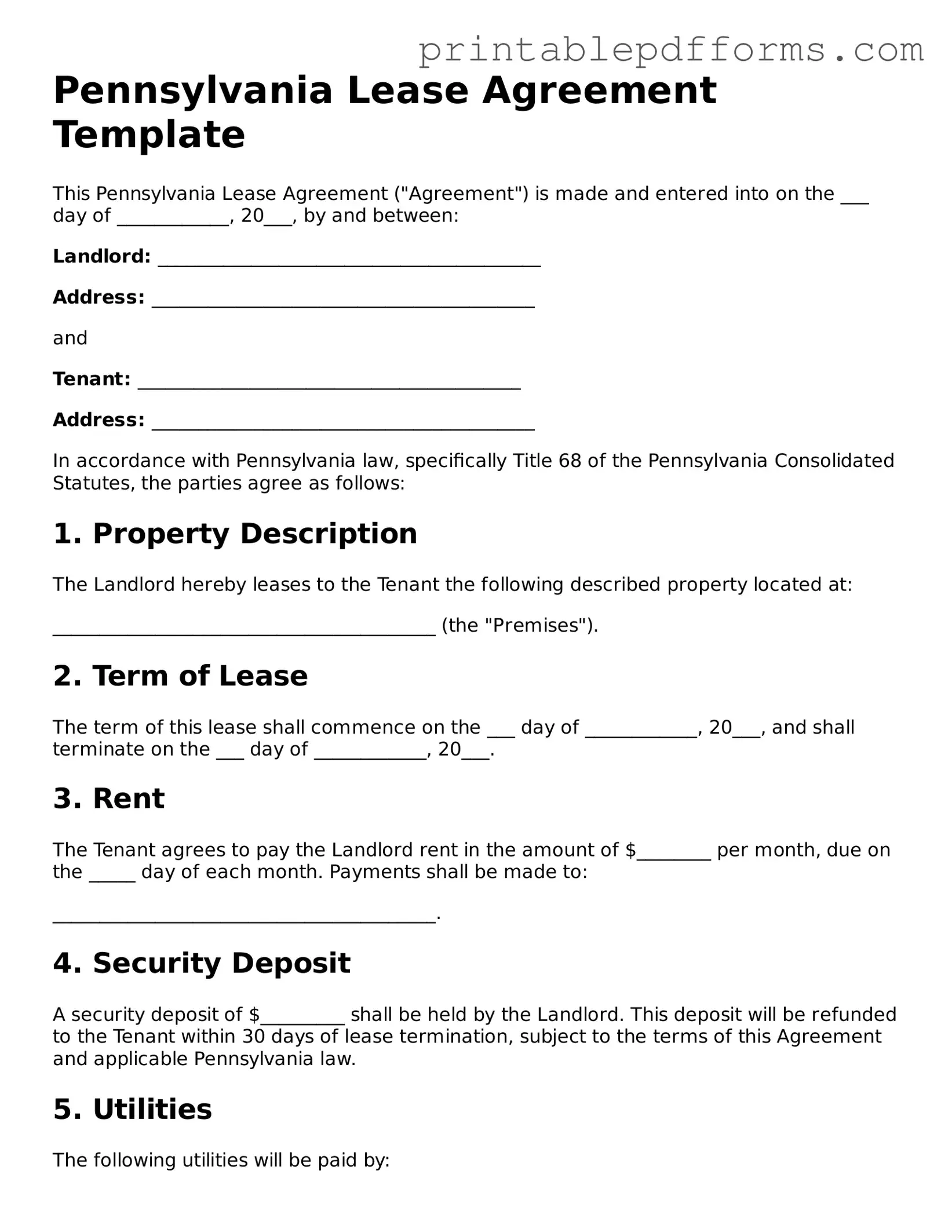Pennsylvania Lease Agreement Template
This Pennsylvania Lease Agreement ("Agreement") is made and entered into on the ___ day of ____________, 20___, by and between:
Landlord: _________________________________________
Address: _________________________________________
and
Tenant: _________________________________________
Address: _________________________________________
In accordance with Pennsylvania law, specifically Title 68 of the Pennsylvania Consolidated Statutes, the parties agree as follows:
1. Property Description
The Landlord hereby leases to the Tenant the following described property located at:
_________________________________________ (the "Premises").
2. Term of Lease
The term of this lease shall commence on the ___ day of ____________, 20___, and shall terminate on the ___ day of ____________, 20___.
3. Rent
The Tenant agrees to pay the Landlord rent in the amount of $________ per month, due on the _____ day of each month. Payments shall be made to:
_________________________________________.
4. Security Deposit
A security deposit of $_________ shall be held by the Landlord. This deposit will be refunded to the Tenant within 30 days of lease termination, subject to the terms of this Agreement and applicable Pennsylvania law.
5. Utilities
The following utilities will be paid by:
- Landlord: ____________________________________
- Tenant: ______________________________________
6. Maintenance and Repairs
The Tenant agrees to maintain the Premises in good condition and promptly report any needed repairs to the Landlord.
7. Alterations
Tenant shall not make any alterations to the Premises without prior written consent from the Landlord.
8. Governing Law
This Agreement shall be governed by the laws of the Commonwealth of Pennsylvania.
9. Signatures
In witness whereof, the parties hereto have executed this Agreement as of the day and year first above written.
_____________________________ (Landlord Signature)
_____________________________ (Date)
_____________________________ (Tenant Signature)
_____________________________ (Date)
